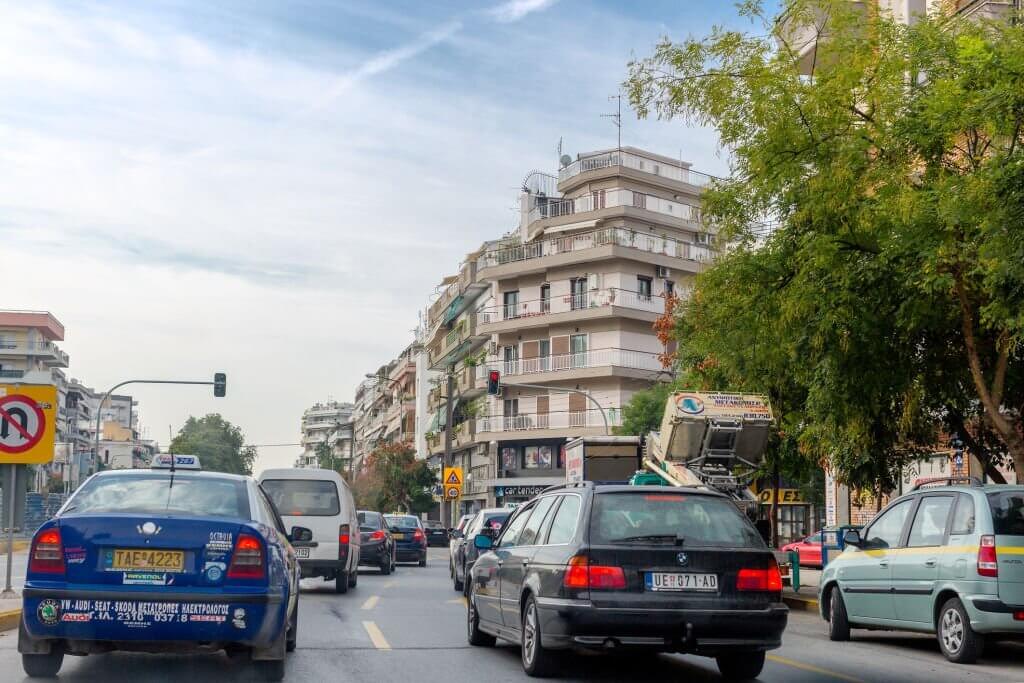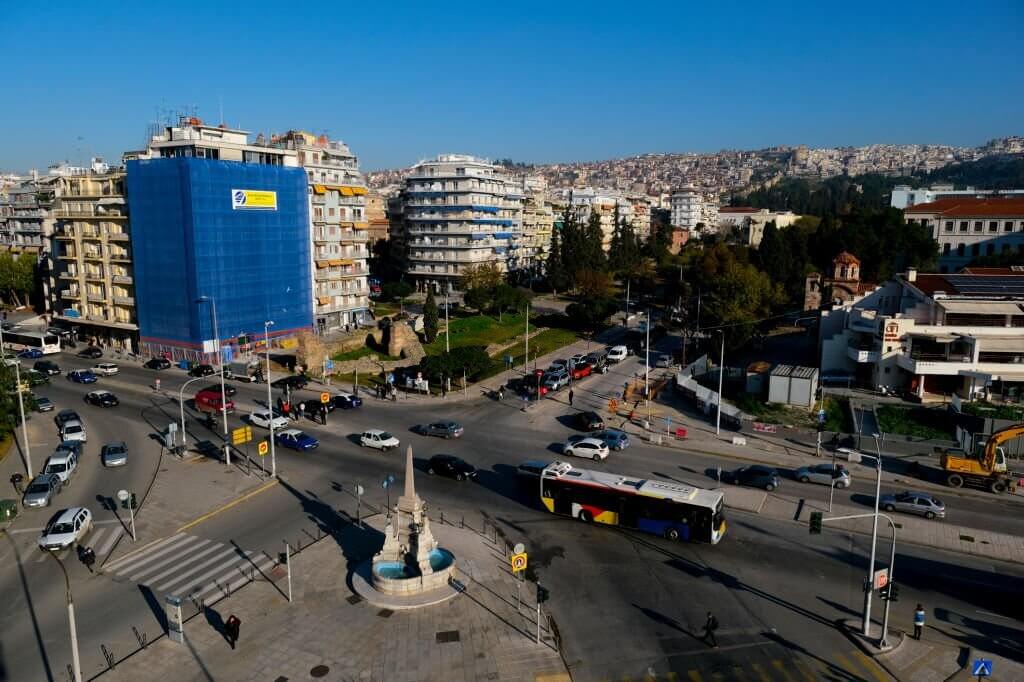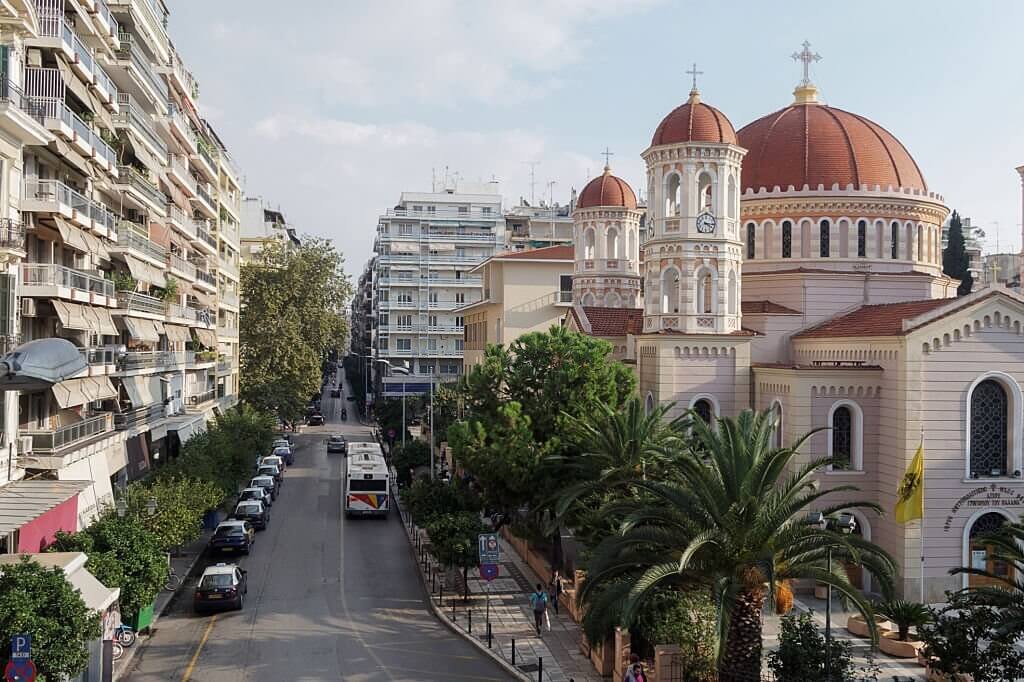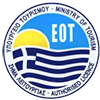Navigating the streets of Thessaloniki requires understanding road safety and local driving etiquette. When driving in Thessaloniki, observing speed limits, being aware of pedestrian crossings, and staying updated with local traffic regulations to avoid violations are important. Additionally, given its busy streets, unexpected stops, and the presence of assertive local drivers, maintaining a safe distance, using indicators early, and preparing for abrupt traffic changes are significant. Adhering to proper driving etiquette is fundamental for a smooth experience in Thessaloniki. This includes showing patience and alertness at all times. Being courteous to other road users by signalling lane changes and allowing vehicles to merge is obligatory. Moreover, Thessaloniki’s layout consists of modern roads and older, narrow streets, especially in its historic centre. Parking in designated areas, using indicators for turns, and respecting pedestrian rights are integral elements of driving etiquette.
For those looking to rent a car in Thessaloniki, several considerations come to the fore. It’s wise to book in advance, especially during peak seasons. Ensuring all necessary documents, including a valid driver’s license, passport, and credit card, are at hand facilitates a hassle-free rental process. Moreover, renters should inspect the vehicle for any pre-existing damages and understand the rental agency’s fuel policy to avoid extra charges. However, the question remains: Is it easy to drive in Thessaloniki? While the city is beautiful and offers much to explore, driving can be challenging, especially for those unfamiliar with its traffic dynamics. Traffic congestion is frequent due to the city’s dense population, making peak-hour driving particularly demanding. Also, some streets are cobbled or have tram tracks, which require added caution. While driving in Thessaloniki can be managed with vigilance and preparation, it comes with challenges.
How is Driving in Thessaloniki?
Driving in Thessaloniki can be a challenging experience for visitors. Its roads are often congested and traffic can be chaotic, with a mix of cars, motorcycles, and pedestrians vying for space. Navigating the narrow streets of the historic centre can be particularly tricky, with limited parking options. Visitors should expect a fast-paced driving environment, where local drivers may display assertive behaviours and traffic rules are not always strictly followed.
While the driving experience in Thessaloniki may be demanding, there are also opportunities to enjoy beautiful views. Thessaloniki is nestled by the sea, and driving along the waterfront promenade offers scenic vistas of the Thermaic Gulf. Visitors can also explore nearby destinations, such as Mount Olympus or the Halkidiki Peninsula, which provide stunning natural landscapes and picturesque routes for those willing to venture beyond the city limits. However, it’s essential to exercise caution, as road conditions in some areas may not be as well-maintained as in the city.
Is it Easy to Drive in Thessaloniki?
No, driving in Thessaloniki is not easy, especially for those unfamiliar with the city. One of the primary reasons is the dense and chaotic traffic, often characterised by narrow streets, limited parking options, and the presence of aggressive local drivers. Navigating these challenges requires patience and attentiveness. Additionally, pedestrians, motorcycles, and other vehicles often jostle for space, creating a dynamic and somewhat unpredictable driving environment.
Furthermore, Thessaloniki’s historical centre has a maze-like layout, making it easy for unfamiliar drivers to get lost. While modern navigation tools can be helpful, frequent congestion and regular changes to traffic patterns due to construction or events can make real-time navigation difficult. Therefore, visitors who drive in the city should be prepared for a potentially stressful experience and always exercise caution.

What are the Road Safety Tips When Driving in Thessaloniki?
When driving in Thessaloniki, several safety tips can make the experience less challenging. First, drivers should always be alert and maintain a safe following distance. Given the city’s dense traffic and the unpredictability of local drivers, this allows for reaction time in case of sudden stops or manoeuvres. Using indicators well in advance and regularly checking mirrors is vital, as motorcycles and scooters often weave between cars. Parking in designated areas is crucial, as illegally parked cars can be towed. Second, understanding Thessaloniki’s layout can reduce confusion. Thessaloniki’s historical centre can be a maze for newcomers. A reliable GPS or navigation app can help drivers find their way and anticipate turns or traffic changes. However, drivers should remain flexible, as frequent roadwork or events can disrupt usual traffic patterns. Familiarising oneself with main roads and landmarks beforehand can assist in easier navigation. The city’s unique driving environment is important to practising safety measures in Thessaloniki. The mix of dense traffic, assertive local driving habits, and narrow streets can present challenges even for seasoned drivers. Being prepared and practising caution not only ensures the safety of the driver and passengers but also contributes to smoother traffic flow and reduces the risk of accidents.
1. Speed Limits
When driving in Thessaloniki, adhering to the posted speed limits is crucial. In urban areas and residential zones, the speed limit is generally set at 50 kilometres per hour (31 miles per hour), unless otherwise indicated. On major city roads, the limit may be 70 kilometres per hour (43 miles per hour), while highways leading in and out of Thessaloniki typically have limits of 90 to 120 kilometres per hour (56 to 75 miles per hour). Strict enforcement of speed limits is common, with traffic cameras and police patrols regularly monitoring compliance. Exceeding these limits can result in fines, license suspension, or other penalties, so drivers must always observe and adhere to the posted speed restrictions.
2. Overtaking
When overtaking in Thessaloniki, drivers should exercise extreme caution. Given the city’s busy roads and the presence of aggressive local drivers, it’s vital to ensure there’s ample space and a clear line of sight before attempting to overtake. Using indicators early to signal intent is essential. It’s also crucial to check the rearview and side mirrors for motorcycles and scooters, as they frequently weave between traffic and can appear suddenly. Overtaking should ideally be done on straight stretches of road and not on bends or intersections. Drivers should always be prepared for the unexpected, such as a vehicle stopping suddenly ahead or a pedestrian crossing the street.
3. Thessaloniki Road Signs
In Thessaloniki, understanding and respecting road signs is important for safe driving. Road signs generally follow international standards, with some unique variations. Signs are often in Greek and Latin scripts, helping non-Greek readers navigate. However, drivers unfamiliar with the area must familiarise themselves with essential signs, such as “ΣΤΑΣΗ” (STOP) and speed limit indicators. Given Thessaloniki’s busy streets and frequent changes due to construction or events, drivers should remain vigilant for temporary road signs indicating detours or restrictions.
4. Alcohol limit for driving in Thessaloniki
When driving in Thessaloniki, it’s important to be aware of the strict alcohol limit. The legal blood alcohol concentration (BAC) limit is 0.05 grams per deciliter (g/dL) or 0.05%, which is lower than in many other countries. The limit is even lower for young and newly licensed drivers at 0.02 g/dL or 0.02%. Greece enforces these limits rigorously, and violating them can result in severe penalties, including fines, license suspension, and legal consequences.
5. Parking in Thessaloniki
Parking can be challenging in Thessaloniki due to the city’s congestion and limited spaces. Drivers should always use designated parking areas and avoid leaving their vehicles in prohibited zones, which are typically marked with yellow or white lines. It’s also essential to look out for signs indicating “ΑΠΑΓΟΡΕΥΕΤΑΙ Η ΣΤΑΘΜΕΥΣΗ” (Parking Prohibited). Parking in Thessaloniki illegally can lead to fines or towing of the vehicle. Due to the scarcity of street parking in the city centre, using paid parking lots or garages can be a more reliable option. Drivers should also be cautious when parking near intersections, bus stops, or pedestrian zones to ensure they do not obstruct traffic or pedestrian pathways.
What Should You Need to Know About Petrol Stations in Thessaloniki?
Listed below are the things visitors should know about petrol stations in Thessaloniki:
- Fuel Types: Petrol stations in Thessaloniki offer a variety of fuel types, including unleaded (Αμόλυβδη – Amolivdi), diesel (Πετρέλαιο – Petrelaio), and sometimes LPG (Υγραέριο – Ygraerio) for vehicles equipped with the appropriate systems.
- Payment Methods: Visitors can pay for fuel with cash or credit/debit cards at most petrol stations. International credit cards are widely accepted.
- Operating Hours: Many petrol stations in Thessaloniki operate 24 hours a day, especially those on major roads and highways. However, some smaller stations may have limited hours, so it’s advisable to plan refueling accordingly.
- Service Assistance: In most cases, drivers are expected to fill their tanks. Attendants may assist with fueling, but it’s customary to tip them a small amount for their service.
- Fuel Quality: Fuel quality in Thessaloniki is generally reliable and meets European standards. Visitors can trust that the fuel they purchase at reputable petrol stations will be of good quality for their vehicles.
What are Emergency Numbers In Case of a Problem while Driving in Thessaloniki?
Listed below are the emergency numbers in case of a problem while driving in Thessaloniki:
- Emergency Services (112): To report accidents, fires, or medical emergencies, visitors can dial the general emergency number 112. This number connects to a central dispatch service that can direct the appropriate assistance.
- Police (100): In case of accidents or emergencies requiring police intervention, visitors can dial 100 to reach the local police authorities.
- Ambulance (166): For medical emergencies or accidents requiring immediate medical attention, visitors should call 166 to request an ambulance.
- Fire Department (199): To report fires or incidents requiring the fire department’s assistance, visitors can dial 199 to reach the local fire services.
- Roadside Assistance (10400): In case of a breakdown or vehicle-related problem, visitors can contact Hellenic Roadside Assistance at 10400 for help with towing, repairs, or other roadside assistance services.
What are the Road Conditions of Northern Greece Roads?
Northern Greece has a diverse range of road conditions. Many major highways and motorways, like the Egnatia Odos, are in good condition and continually maintained, offering a smooth driving experience. However, when venturing into more rural areas or mountainous regions, drivers might encounter narrower roads, some of which might be less maintained and present challenges, especially in adverse weather conditions. It’s common to find roads winding through hilly or mountainous terrain, demanding added caution.
Thessaloniki, the second-largest city in Greece, presents its own road conditions. It is located in Northern Greece and has a mix of modern roads and older, narrower streets, especially in the historic city centre. Traffic congestion is a frequent issue due to the city’s dense population and bustling activities, making driving during peak hours particularly challenging. As with many ancient cities, some streets in Thessaloniki are cobbled or have tram tracks, which can be slippery when wet. Parking can also be challenging, given Thessaloniki’s dense layout and limited spaces.
What are Famous Places in drive to in Thessaloniki?
Listed below are the famous places to drive in Thessaloniki:
- Aristotelous Square: Aristotelous Square is an iconic square in Thessaloniki’s landmarks that offers a scenic drive along the waterfront with views of the White Tower and the Thermaic Gulf. It’s a central hub for shopping, dining, and cultural events.
- Tsimiski Street: Tsimiski Street is a prominent shopping and business district in Thessaloniki, known for its vibrant atmosphere. Driving along this street allows visitors to explore numerous shops and cafes.
- Ano Poli (Upper Town): Located on a hill overlooking the city, Ano Poli offers a historic and picturesque drive through narrow, winding streets. Visitors can enjoy panoramic views of Thessaloniki and explore its old-world charm.
- Vergina: A short drive from Thessaloniki, Vergina is home to the Royal Tombs of the ancient Macedonian kings. It is a UNESCO World Heritage Site that offers a glimpse into ancient history and is worth visiting.
- Mount Olympus: For those seeking an adventurous drive, the road to Mount Olympus provides stunning mountainous scenery. Visitors can enjoy hiking and outdoor activities once they reach the national park’s entrance.
What is the Proper Driving Etiquette when Driving in Thessaloniki?
In Thessaloniki, as in many busy urban centres, driving etiquette is essential to navigate the bustling streets effectively and maintain a harmonious flow of traffic. Firstly, it’s crucial to remain patient and alert at all times. Given the city’s density, drivers may often encounter sudden stops, assertive local drivers, and unpredictable manoeuvres. Maintaining a safe following distance, using indicators early, and being prepared for abrupt changes in the traffic environment are vital aspects of courteous driving in Thessaloniki.
Another key element of proper driving etiquette in Thessaloniki is respecting pedestrian rights. Due to the city’s layout, pedestrian crossings are frequent. Drivers should always yield to pedestrians at marked crossings, considering locals might sometimes cross roads outside designated areas. In these situations, caution and anticipation become paramount to ensure the safety of both pedestrians and other road users.
Parking etiquette is also of significant importance. With limited parking spaces in the city, it’s crucial not to park in prohibited zones marked by yellow or white lines or obstruct driveways and entrances. Instead, opting for paid parking lots or garages, especially when spending extended periods in the city centre, is advisable. This practice ensures that streets remain passable and reduces the risk of vehicles being towed for illegal parking.
How to Park Your Car in Thessaloniki?
Listed below is a step-by-step instruction on how to park your car in Thessaloniki:
- Find a Parking Space: Look for designated parking spaces along the street or nearby parking lots or garages. Remember that parking can be challenging in Thessaloniki’s city centre, so be patient while searching.
- Check Parking Regulations: Look for signs that indicate whether parking is allowed in the area. Observe coloured lines on the curb; yellow or white lines often indicate no parking zones.
- Pay for Parking: Find the nearest parking meter or payment kiosk if parking on the street in a paid zone. Follow the instructions on the meter to select your desired parking duration and pay in cash or with a card.
- Display Parking Ticket: The meter will issue a parking ticket once payment is made. Place this ticket on the dashboard of your vehicle so it’s visible from outside. Alternatively, some areas may have digital parking payment apps, which require you to register and pay using your smartphone.
- Observe Time Limit: Be mindful of the parking duration you paid for, as exceeding it may result in fines or towing. Return to your vehicle before the parking time expires or renew the parking if necessary.
Do Hotels in Thessaloniki provide parking?
Yes, many Thessaloniki hotels do provide parking facilities for their guests. However, parking availability may vary depending on the hotel’s location, size, and price range. Larger, upscale hotels in the city centre are more likely to offer on-site parking or valet services, although this might come at an additional cost. Smaller hotels or those in more congested areas may have limited or no parking options, requiring guests to use nearby public parking lots or garages. Therefore, when booking accommodations in Thessaloniki, you should inquire about parking availability and any associated fees to make appropriate arrangements for your vehicle.

How to Avoid Getting Traffic Violation Tickets?
Listed below are the best things to do to avoid getting traffic violation tickets:
- Observe Speed Limits: Always adhere to posted speed limits and adjust the driving speed according to road conditions.
- Respect Traffic Signals: Stop at red lights and proceed only when the light turns green. Yield the right of way when required, such as at yield signs or intersections.
- Follow Parking Regulations: Park only in designated areas and obey parking signs and markings. Pay attention to parking time limits and meters to avoid overstaying.
- Use Seatbelts: Ensure all vehicle occupants are wearing seatbelts at all times.
- Avoid Phone Use: Do not use mobile phones or other electronic devices while driving unless equipped with hands-free technology.
- Observe Road Signs: Pay close attention to road signs, including speed limits, no-entry signs, and one-way street indicators.
- Don’t Drink and Drive: Never drive under the influence of alcohol or drugs. Always designate a sober driver or use alternative transportation if you’ve consumed substances that impair your ability to drive safely.
- Stay Informed: Stay updated with local traffic regulations, as they may change or be subject to enforcement campaigns.
- Regular Vehicle Maintenance: Ensure your vehicle is well-maintained with functioning lights, brakes, and tires to prevent accidents and potential traffic violations.
- Be Courteous: Show courtesy to other road users by signalling lane changes and allowing merging vehicles to enter the traffic flow, reducing the likelihood of aggressive driving behaviour and conflicts.
What are the Tips when Renting a Car in Thessaloniki?
Listed below are the tips when renting a car in Thessaloniki:
- Book in Advance: Booking a rental car in advance allows travellers to secure a vehicle that suits their needs and potentially benefit from early booking discounts. During peak tourist seasons, rental car availability can be limited, so reserving ahead of time is advisable.
- Check Driving Requirements: Rental agencies typically have minimum age requirements, and drivers should ensure they meet these criteria before making a reservation. The minimum age for renting a car in Greece is often 21 or 25, depending on the rental company.
- Review Insurance Options: Understanding the available insurance options is crucial. Travellers should carefully review the Collision Damage Waiver (CDW) and liability coverage offered by the rental company. Depending on their needs, they may consider purchasing additional coverage to minimise financial risk in case of accidents or damage.
- Inspect the Vehicle: Before accepting the rental car, travellers should thoroughly inspect the vehicle’s condition. Any pre-existing damage, no matter how minor, should be documented and agreed upon with the rental company like Potos Car Rentals to avoid disputes and charges upon return.
- Understand Fuel Policy: Different rental companies may have varying fuel policies, such as returning the car with a full tank or opting for a pre-paid fuel tank. Travellers should understand the Thessaloniki rental car company’s policy to avoid extra charges for fuel and plan accordingly.
What is the ideal car type to explore Thessaloniki?
Listed below are the ideal car types to explore Thessaloniki:
- Compact Cars: Compact cars, such as hatchbacks or small sedans, are ideal for navigating Thessaloniki’s narrow streets and finding parking in the city centre, where space can be limited. Their size makes them agile and easy to manoeuvre through traffic and tight urban spaces. Compact cars are also fuel-efficient, which is beneficial for city driving.
- Electric or Hybrid Cars: Electric or hybrid cars are environmentally friendly and are becoming more accessible in Thessaloniki. They can be a practical choice for city driving, as they often have good acceleration at lower speeds and can save on fuel costs.
- Small SUVs or Crossovers: Small SUVs or crossovers offer more space and comfort than compact cars while still suitable for city driving and parking. They can easily handle occasional trips to surrounding areas and attractions outside of Thessaloniki.
- Automatic Transmission Cars: Opting for a car with automatic transmission can simplify the driving experience, especially for travellers unfamiliar with manual transmission vehicles. Automatic cars are readily available in Thessaloniki and can reduce the stress of shifting gears in city traffic.
What are the Documents Necessary to Hire a car in Thessaloniki?
Listed below are the documents necessary to hire a car in Thessaloniki:
- Valid Driver’s License: A driver’s license is the primary document needed to prove your eligibility to drive. International visitors might require an International Driving Permit (IDP) if their license is not in English or Latin script. The license should be valid for the duration of the rental period.
- Passport or ID: A passport or ID is used to confirm the renter’s identity. For international visitors, a passport is a standard requirement, and the rental agency will check it against the name on the driver’s license.
- Credit Card: A credit card, usually in the main driver’s name, is required for security deposits and payments. Some rental companies might temporarily hold or block a specific amount as a security deposit, which is released after returning the vehicle undamaged.
- Proof of Insurance: While rental companies usually offer their own insurance options, if you’re using external insurance, documentation proving coverage is essential. This document ensures that the cost of repairs is covered in an accident or damage.
- Rental Agreement: The rental agreement is a contract between the renter and the car hire company detailing the terms and conditions of the rental. Both parties should review and understand the terms, including the duration, mileage limits, and responsibilities in case of damage or theft.
Do Rental Cars have Insurance?
Yes, rental cars typically come with insurance coverage, but the extent and type of coverage can vary depending on the rental company and the specific rental agreement. Common types of insurance coverage for rental cars may include Collision Damage Waiver (CDW), which reduces the renter’s liability for damage to the rental car, and Third-Party Liability Insurance, which covers damage or injury to third parties. Some rental companies offer additional insurance options, such as Personal Accident Insurance (PAI) and Supplemental Liability Insurance (SLI). However, it’s essential for renters to carefully review the rental agreement and insurance options to understand the terms, coverage limits, and any additional fees associated with insurance. Travellers should also check if their personal auto insurance or credit card provides coverage for rental cars, as this can affect their need for additional rental car insurance.
Are the Roads Safe in Northern Greece?
The safety of roads in Northern Greece can vary depending on several factors. Major highways and well-travelled routes generally have good road conditions and safety measures. However, in more remote or mountainous areas, roads may be narrower, winding, and less well-maintained. Weather conditions, especially in winter, can also affect road safety, with the possibility of snow and ice in some regions. Drivers must exercise caution, adhere to speed limits, and be prepared for varying road conditions when travelling in Northern Greece. Staying informed about local traffic rules and regulations can contribute to safer road experiences in the region.
Does a Driving License Require Driving in Thessaloniki?
Yes, a valid driving license is required to operate a vehicle in Thessaloniki, Greece. This applies to both residents and tourists. Greek authorities recognise international driving permits (IDPs) alongside national driver’s licenses for tourists from many countries. Visitors planning to drive in Thessaloniki should ensure that their driver’s license is valid and, if necessary, obtain an IDP before arrival. Local law enforcement may request to see a valid driver’s license during routine traffic stops or in the event of an accident, so carrying the license at all times while driving is essential to avoid legal issues.
What are the best beaches in Thessaloniki that you can visit with a Car?
Listed below are the best beaches in Thessaloniki:
- Perea Beach: About 20 kilometres(12.42 miles) southwest of Thessaloniki, Perea Beach offers a sandy shore and clear waters. It’s easily accessible by car via the Thessaloniki-Nea Moudania highway and is known for its seafood restaurants and cafes along the waterfront.
- Nea Krini Beach: Nea Krini is situated in the western part of Thessaloniki and can be reached by car within the city limits. It is one of the best beaches in Thessaloniki that features a pedestrian promenade with numerous bars and taverns, making it a popular spot for locals and visitors.
- Agia Triada Beach: Agia Triada Beach is approximately 25 kilometres(15.53 miles) southeast of Thessaloniki and is known for its Blue Flag status. It offers a well-organized beachfront with beach bars, sunbeds, and water sports facilities, making it a great option for a day trip by car.
- Epanomi Beach: Situated around 30 kilometres(18.64 miles) east of Thessaloniki, Epanomi Beach is known for its long sandy shore and shallow waters, suitable for families. Visitors can access it by car via the Thessaloniki-Moudania highway, and it offers a peaceful atmosphere away from the city’s hustle and bustle.
- Angelochori Beach: Located approximately 35 kilometres(21.74 miles) southwest of Thessaloniki, Angelochori Beach is known for its natural beauty. It’s accessible by car and provides a serene, relaxing environment with a few local beach bars.


 German
German Greek
Greek Română
Română Polski
Polski


